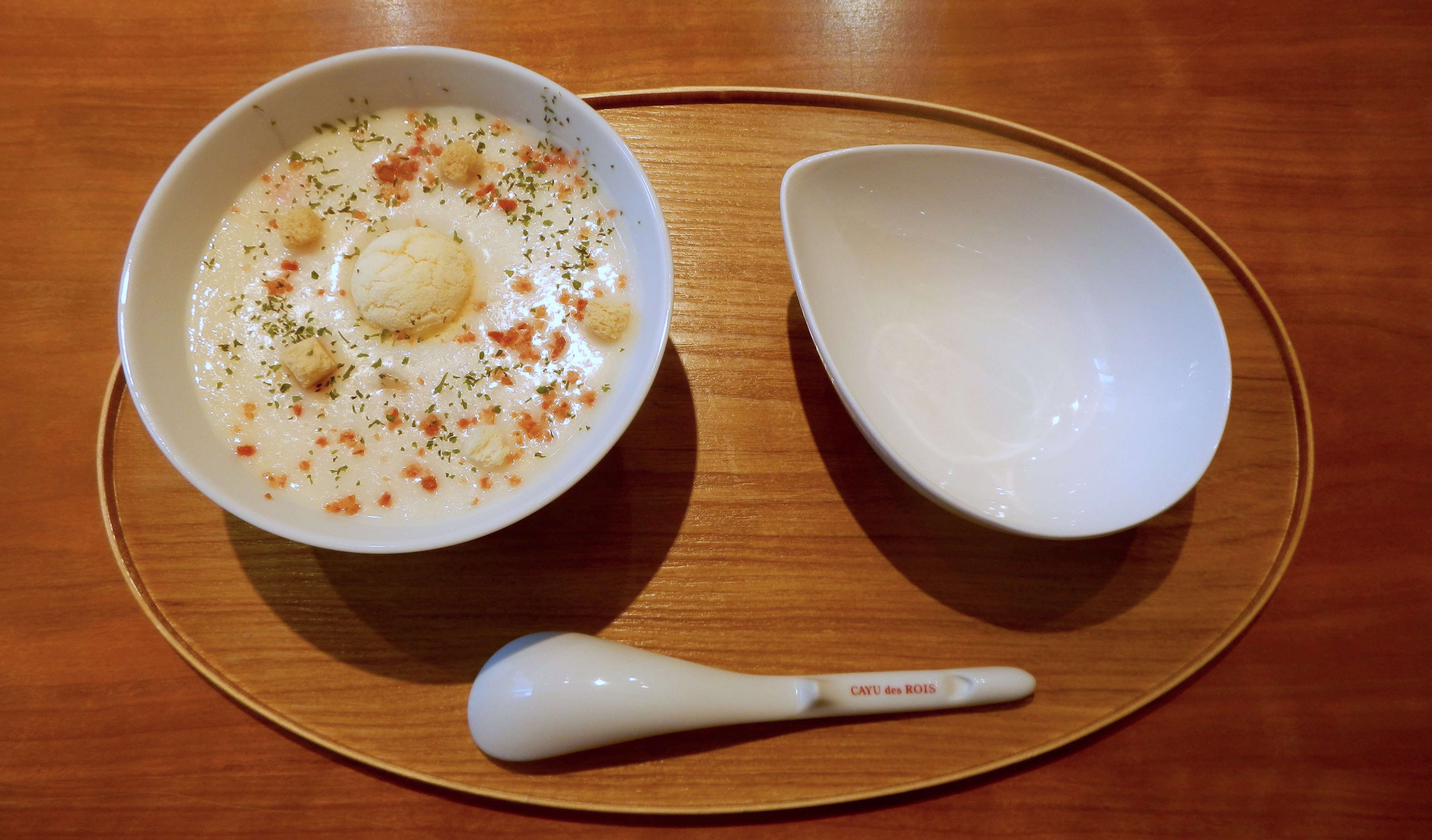The thick rice porridge known as okayu has been eaten in Japan for around 1,000 years. However, the early versions were less watery — it wasn't until the Edo Period (1603-1868) that the dish evolved into a semi-liquid dish. In the Kanto region it was traditionally eaten when someone was not feeling well; in Kansai it was typically eaten for breakfast.
Okayu is made by cooking rice with extra water or stock, and it's eaten with a renge, a large ceramic spoon. It can be cooked with different ingredients or topped with condiments. Okayu can be soothing, nourishing — and it's easy to digest, too. (Strict vegetarians need to be careful as most shops will use meat or seafood in the stock.)
The dish originated in China, so it is no surprise that Chinese restaurant Turandot Garyu-kyo, in Tokyo's Akasaka district, takes okayu to a gourmet level. Star chef Yuji Wakiya starts off with a rich stock made from pork, chicken and Chinese Kinka ham. He sautes the rice before adding the stock — the resulting flavor is rich in umami but delicate. Turandot's vegetable okayu is studded with sweet potatoes, carrots, asparagus and mushrooms.



